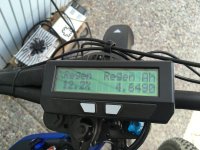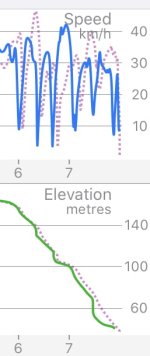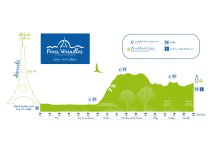by Steph » Sep 25 2020 8:10am
trackebike wrote: ↑Sep 23 2020 7:26pm
Steph wrote: ↑Sep 22 2020 4:52am
This is the part of my commute for which I’m considering regen.
Part of your commute. You need to be specific here. How far and what is the rest of commute like?
Actually I don’t need to be specific (even this part of my trip is not fully relevant, I mostly wanted to present the braking profile in sync with the slope) and that’s a big part of my equation:
As mentioned in a previous post, my plan (yes, my bike is not converted yet) is to go for a clutched motorisation, so I can de/activate it for both driving and regen situations.
For the rest of my commute, I plan to keep the bike in human power only mode (it’s flat enough for me to pass street legal ebikes so I would only incur motor drag).
Going down, whatever regen I can get is a free gain and a saving on my pad budget. (It won’t get me rich but it’s one maintenance point to do less often, a tiny bit of comfort that I care for).
Going up I don’t even plan to use the assist all the way, but there are a couple of steeper section that really break my rhythm (average slope is at 7% but topping at 12 to 14% in these sections) and this is where I want to use some assist.
Reading all the responses, I get that the typical setup in consideration is for an always engaged motor, and the ”efficiency” relates to the full trip (regen watts/drive watts, with distance of both sections summing as the total trip distance). With a disengaging motor, I could ironically get over 100% (selectively using regen going down and hardly using assist at all); in a sense, using my legs to charge the battery.
Because of this I have a hard time figuring what 7% or 14% regen means for me. I don’t care about extended range, my commute remains the same.





